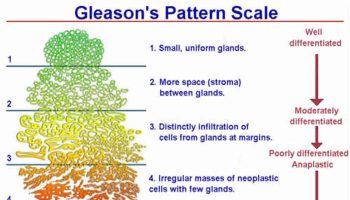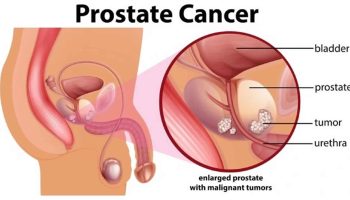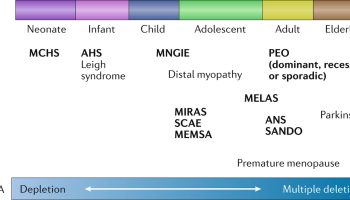Vernix caseosa
Vernix also known as vernix caseosa is a white cheesy waxy substance that protects your baby’s skin from the constant exposure to amniotic fluid in the womb and, as it later exits the birth canal, from bacterial and environmental insults 1. Vernix caseosa, the waxy substance that coats the skin of newborn babies, has an extremely complex lipid composition and is produced during the third trimester of gestation 2. The vernix is washed off with the baby’s first bath.
Vernix caseosa is a complex biofilm composed of water in hydrated corneocytes (80%), surrounded by a matrix of lipids (10%) and proteins (10%) 2. The lipid fraction is extremely rich and not yet fully characterized despite the efforts of numerous researchers 3. The most abundant lipid classes (wax esters, cholesteryl esters, diol diesters and triacylglycerols) are known, but they are characterized typically only with respect to their fatty acids composition, investigated from hydrolyzed lipid fractions.
Other babies are born very wrinkled. And some, especially premature babies, have a soft, furry appearance because of lanugo, a fine hair that develops while in the womb. Lanugo usually comes off after a week or two. The lanugo will rub off and disappear after a week or two if they were full-term; if your baby was premature, the lanugo will take longer to completely disappear.
Vernix benefits
Vernix caseosa is a cheese-like substance that coats the fetal skin from the middle of gestation 4. Vernix caseosa protects the skin of a human fetus during the last trimester of pregnancy and of a newborn after the delivery. Vernix caseosa protects the fetus from the amniotic fluid, prevents the loss of water and electrolytes, and aids in postbirth adaptation of a newborn’s skin 5. The main components of the vernix caseosa are water, sebum, desquamated epithelial cells, and shed lanugo hair. Chemically, it is a rich mixture of lipids and proteins. Even though it has been studied for many decades, the chemical constituents of vernix caseosa have not been comprehensively characterized yet. The enormous chemical complexity of vernix caseosa lipids has fascinated scientists, but they are still far from completely understanding the biological roles of individual lipid classes. Earlier studies of lipid composition focused on abundant neutral (nonpolar) species 6, with significantly less attention being paid to polar lipids, mostly represented by ceramides 7.
Virtually nothing is known about the chemical variability of vernix caseosa lipids depending on the gestational age and health conditions, the changes in the chemical composition during fetal development or the possible diagnostic value of vernix caseosa components. All this information is of importance for current neonatology and medicine in general. Sex-related aspects of the early skin development are not well understood either. Certain differences between vernix caseosa lipids of newborn boys and girls were reported in early eighties 8 using analytical methodology available at that time and a limited number of samples. The data relied either on semi-quantitation of lipid classes separated by thin layer chromatography or lipid hydrolysis followed by analysis of fatty acid methyl esters. The structures of intact lipids involved in sex-related differences have not been disclosed. Recent advances in analytical instrumentation, namely in mass spectrometry, allow us to have a closer look at the chemistry of vernix caseosa and the human skin ontogeny from a different perspective.
Vernix caseosa purpose
Vernix caseosa, the waxy substance that coats the skin of newborn babies, has an extremely complex lipid composition and is produced during the third trimester of gestation 2. In utero, vernix caseosa serves as a waterproofing film and modulator of transepidermal water flux 9, facilitates the final stages of the skin and gastrointestinal system development and protects the skin from some of the agents present in amniotic fluid 10. After the birth, vernix caseosa acts as an antibacterial shield 11 and helps the neonate to adapt to the dry environment 12. Very low birth-weight preterm infants lack vernix caseosa and are susceptible to invasive infections because of insufficient formation of the stratum corneum (outer layer of the skin) 13. The skin of prematurely born babies suffers from excessive water loss, resulting in dangerous dehydration and heat loss 14. Vernix caseosa also shows a remarkable ability to enhance wound healing, which promises new therapies for patients with altered skin integrity after burn injuries or skin diseases. Because a therapeutic use of native vernix caseosa from mature newborns is impossible, clinically relevant artificial substitutes of vernix caseosa are yet to be developed 15.
- Hoath SB, Pickens WL, Visscher MO (2006) The biology of vernix caseosa. Int J Cosmetic Sci 28: 319–333.[↩]
- Singh G, Archana G (2008) Unraveling the mystery of vernix caseosa. Indian J Dermatol 53: 54–60.[↩][↩][↩]
- Míková R, Vrkoslav V, Hanus R, et al. Newborn boys and girls differ in the lipid composition of vernix caseosa [published correction appears in PLoS One. 2014;9(9):e107847]. PLoS One. 2014;9(6):e99173. Published 2014 Jun 9. doi:10.1371/journal.pone.0099173 https://www.ncbi.nlm.nih.gov/pmc/articles/PMC4049714[↩]
- Hoath S. B., Pickens W. L., and Visscher M. O.. 2006. The biology of vernix caseosa. Int. J. Cosmet. Sci. 28: 319–333.[↩]
- Harazim E, Vrkoslav V, Buděšínský M, et al. Nonhydroxylated 1-O-acylceramides in vernix caseosa. J Lipid Res. 2018;59(11):2164‐2173. doi:10.1194/jlr.M088864 https://www.ncbi.nlm.nih.gov/pmc/articles/PMC6210899[↩]
- Kalužíková A., Vrkoslav V., Harazim E., Hoskovec M., Plavka R., Buděšínský M., Bosáková Z., and Cvačka J.. 2017. Cholesteryl esters of ω-(O-acyl)-hydroxy fatty acids in vernix caseosa. J. Lipid Res. 58: 1579–1590.[↩]
- Rissmann R., Groenink H. W. W., Weerheim A. M., Hoath S. B., Ponec M., and Bouwstra J. A.. 2006. New insights into ultrastructure, lipid composition and organization of vernix caseosa. J. Invest. Dermatol. 126: 1823–1833.[↩]
- Stewart ME, Quinn MA, Downing DT (1982) Variability in the fatty-acid composition of wax esters from vernix-caseosa and its possible relation to sebaceous gland activity. J Invest Dermatol 78: 291–295.[↩]
- Youssef W, Wickett RR, Hoath SB (2001) Surface free energy characterization of vernix caseosa. Potential role in waterproofing the newborn infant. Skin Res Technol 7: 10–17.[↩]
- Tansirikongkol A, Wickett RR, Visscher MO, Hoath SB (2007) Effect of Vernix Caseosa on the Penetration of Chymotryptic Enzyme: Potential Role in Epidermal Barrier Development. Pediatr Res 62: 49–53.[↩]
- Tollin M, Bergsson G, Kai-Larsen Y, Lengqvist J, Sjövall J, et al. (2005) Vernix caseosa as a multi-component defence system based on polypeptides, lipids and their interactions. Cell Mol Life Sci 62: 2390–2399.[↩]
- Visscher MO, Narendran V, Pickens WL, LaRuffa AA, Meinzen-Derr J, et al. (2005) Vernix caseosa in neonatal adaptation. J Perinatol 25: 440–446.[↩]
- Bautista MI, Wickett RR, Visscher MO, Pickens WL, Hoath SB (2000) Characterisation of Vernix Caseosa as a Natural Biofilm: Comparison to Standard Oil-Based Ointments. Pediatr Dermatol 17: 253–260.[↩]
- Tansirikongkol A, Visscher MO, Wickett RR (2007) Water-handling properties of vernix caseosa and a synthetic analogue. J Cosmet Sci 58: 651–662.[↩]
- Rissmann R, Oudshoorn MH, Kocks E, Hennink WE, Ponec M, et al. (2008) Lanolin-derived lipid mixtures mimic closely the lipid composition and organization of vernix caseosa lipids. Biochim Biophys Acta 1778: 2350–2360.[↩]





